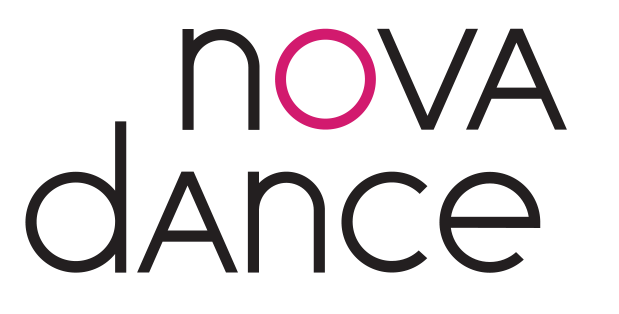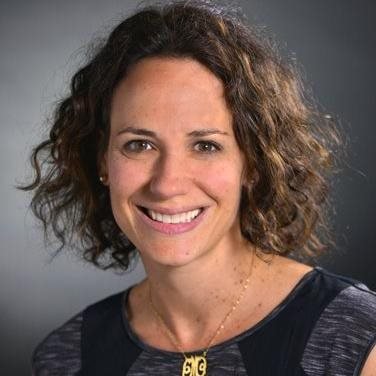Interview with Melissa Tafler from Baycrest@Home
In 2021 we have partnered with BAYCREST@HOME and TO LIVE to deliver DISCOVER DANCE to older adults living with dementia or cognitive impairment.
We spoke with Melissa Tafler, who works as Manager of Culture, Arts and Health Services for the Baycrest@Home, about her perspective on the impact of dance and the arts in the healthcare sector.
We’d love to know more about your role as the Manager of Culture, Arts and Health Services at Baycrest, and your passion for arts programming across the healthcare sector.
Well, my role is to build a program that is a platform of services for older adults who are living at home with dementia or cognitive impairment, and their caregivers, that assist them in staying socially engaged, reducing social isolation, and tapping into meaningful experiences as a part of their day to day to lives.
What is your favourite part of your role?
I love working with artists. I absolutely love it because I really value their perspective. I learn something new from every artist that I work with. It helps me learn something new about my own practice in healthcare in a much deeper way. It re-affirms for me that there are so many ways that we are connected – regardless of our age, our gender, our backgrounds, our cultures and that there is this universal experience of expression and creativity that is in all of us. I feel really quite grateful to have the opportunity to work with artists who remind me of those things on a regular basis.
Could you tell us more about the kind of arts programming available to Baycrest@Home clients and what kind of impact the arts can make on this population?
We really strive to tap into all of the arts modalities -– dance, visual arts, music, drama, poetry, storytelling, writing – and this is because I really believe that the arts give older adults the opportunity to express themselves in different kinds of ways. It opens possibilities for communicating thoughts and ideas that may be harder to express with traditional/verbal communication. The arts are also tapping into areas of the brain that we know are preserved, even with cognitive impairment, such as imagination and creativity. So, we want to harness those, as people age and they have challenges in other areas of cognitive functioning. It’s a very strengths-focused approach.
One of these programs is, of course, the Discover Dance program in partnership with TO Live and Nova Dance. What motivated this partnership?
Dance has been a particular area of interest, in aging, because of its ability to tap in to the physical, emotional and cognitive domains. When we were given the opportunity to partner with Nova Dance and TO Live through Discover Dance, we were just thrilled that we would not only give our community an opportunity to be part of a dance-based experience, but that Discover Dance is also about exposure to new forms of dance and about dances across cultures. These are experiences that are very difficult for older adults to access otherwise, and they may never have the chance to do that. The fact that it’s been able to be delivered virtually has made the pandemic not a barrier to this experience, which is so critical right now especially, as so many other experiences are not able to be accessed. So, for all those reasons, this was a wonderful fit, and aligned so well with the mandate I have with Baycrest@Home.
How has this new partnership with Nova Dance been for you personally?
Oh my gosh. For me, it’s been an absolute joy. First, it’s deepened my appreciation for dance as a practice. Also, it has reaffirmed my belief that dancers have a role to play in providing health and wellness programs for older adults and that they come to this work with a perspective on the body and on movement and how fundamental it is to tap into that place for people, so naturally. For those reasons, I’m very excited about it. I’ve also learned so much from Neena and from Nova around the role of self-expression in dance and about how they have approached their work in using dance to build community and bring people together.
Is there anything you’re doing specifically to cope with stress at this time?
All the arts! Everyone’s doing something. For example, a couple days ago I saw this male dancer in the Bahamas who took a workshop and is now learning – in the Bahamas – an Indian art form. That’s inspirational. And he’s so good! He had no dance background, and then wanted professional training and contacted this teacher and started taking her online classes. But for a good couple of years he was learning from youtube. That motivation, that inspiration… people are just coming up with really creative ways to stay healthy and it makes me want to participate and give back.
It is obvious that you understand the connection between dance and joy, and the power the art form has to improve our lives - is there a particular dance experience that was key to your connection?
Generally, I’ve always felt that dance has been a real vehicle for me to express myself, although I am not a professional dancer, and I don’t have any training in dance. For me, learning and participating in the namaskaram, has been profound. I feel that that exercise has been so grounding and brings you back to such a central place. It’s been so humanizing and connecting for me. I had never done that or known about that movement practice before. So, that’s been eye-opening, and I feel really grateful to know about it.
What are ways in which you have seen dance touch the lives of others?
I mean I’ve just seen those moments of joy that I think it’s not something you can really write about or explain. It’s really seeing it; seeing how it brings out a playful side in all of us. It brings out an ability to communicate, just by moving and watching other people move or respond to those movements. I’ve seen people who are not moving at all, start to respond, once they start hearing the music and feeling the music and go from the tiniest little toe tap to movements of swaying and responding to the beat. I think that internal rhythm in everyone is one of those things that stays with people no matter their challenges around aging or with physical function. And I’ve seen people be able to respond to that basic body rhythm and movement during the Discover Dance sessions. So, it’s quite profound for me in watching people, even virtually, respond and engage in the experience. I think you see it in so many gestures; their expression of themselves. They’re sharing with you something that is really a deep part of themselves and it’s coming out through a movement.
Do you have one memorable moment from Discover Dance, what is it?
They’ve really all been super memorable. What’s been super exciting for me is that it’s pushed back against stereotypes that I find are prevalent sometimes with this population. For example, ‘types of dance’, or ‘types of music’ that people like, and ‘this is the kind of music that you should connect people to’ or ‘this type of dancing because this is what they did before or in their past’. But this experience has shown me that you can expose people to all kinds of dance and all kind of practices, and that the idea around novelty and new learning, is also an important part of this program. It isn’t just dance in the way that they’ve been used to seeing dance or know dance. It’s about exposing people to a whole world of dance that’s out there and is a deep part of cultures. So, for me that’s really the most exciting part of it – shattering some stereotypes about the kind of dance or the kind of music that people of this age group respond to.
Do you see Discover Dance becoming in-person with Baycrest, and how might that look post pandemic?
Absolutely! We know live dance experiences work. We’ve done them in the past, and we hope to continue to do them. We can gather people at our facility or in community settings and bring dancers to those spaces or bring older adults to dance spaces. Maybe there’s even some hybrid version of it, where there’s an online component. I think the pandemic has really expanded our ideas of what’s possible with engagement, and I think we are really in a place where we can see that both virtual and in-person experiences can be super beneficial, and meet the aims of bringing people together, connecting people and engaging people in meaningful opportunities.
Lastly, how have you been coping/staying connected through this pandemic?
I’m really trying to stay connected to the present and take things one day at a time. I spend a lot of my down time away from screens, because I work remotely and I’m on a screen all day-every day. So, when I have the chance to just do some self-care, I really try to make it screen-free. I go for a lot of walks, I’ve started running over the pandemic, so that’s been a great outlet for me. As well as just spending time with my family and my dog…his name is Crosby. He’s a pandemic pup! It was a very good addition to my family.

